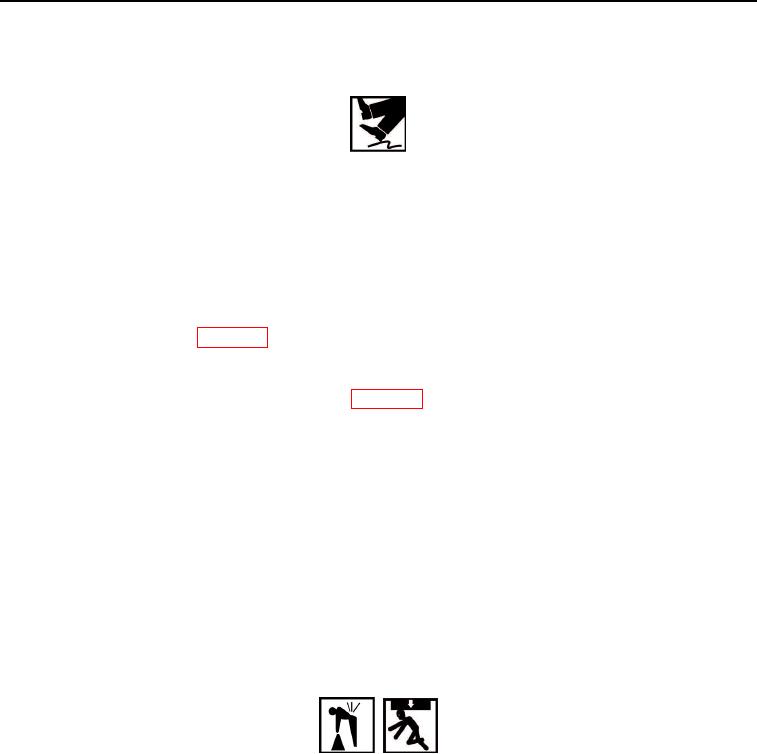
TM 5-3805-264-13&P
0067
REMOVAL
WARNING
DO NOT disconnect hydraulic lines while engine is running. Engine must be shut down and
dump body fully lowered or supported on body props before lines are disconnected.
Escaping hydraulic fluid under pressure can penetrate the skin. Hydraulic oil is slippery and
may cause falls. A suitable container should be used to catch any draining hydraulic fluid.
Ensure that all spills are cleaned up immediately and disposed of in accordance with local
procedures. Failure to comply may result in personnel injury or death.
CAUTION
Hoses and ports in hydraulic components should be plugged to prevent contamination of
hydraulic system (WP 0072). Failure to comply may result in damage to equipment.
NOTE
Hoses should be tagged before removal (WP 0072).
1.
Disconnect hydraulic return hose (Figure 1, Item 5) from tee (Figure 1, Item 3).
2.
Remove tee (Figure 1, Item 3) with oil sampling valve (Figure 1, Item 4) from filter housing
(Figure 1, Item 2).
3.
Loosen clamp (Figure 1, Item 11) and disconnect suction hose (Figure 1, Item 12) from hose barb
(Figure 1, Item 13).
4.
Remove hose barb (Figure 1, Item 13) and elbow (Figure 1, Item 14) from hydraulic reservoir
(Figure 1, Item 1).
5.
Attach a nylon sling and suitable lifting device to hydraulic reservoir (Figure 1, Item 1). Take up slack in
sling.
6.
Remove four locknuts (Figure 1, Item 10), spacers (Figure 1, Item 9), lockwashers (Figure 1, Item 8),
washers (Figure 1, Item 7), and screws (Figure 1, Item 6). Discard locknuts and lockwashers.
WARNING
Use extreme care when handling heavy parts. Lifting cables, chains, hooks, and slings
must be in good condition and of suitable capacity. Keep clear of parts supported only by
lifting device. Failure to comply may result in personnel injury, death, and/or damage to
equipment.
7.
Remove hydraulic reservoir (Figure 1, Item 1) from cylinder support frame (Figure 1, Item 15).
0067-2
03/15/2011Rel(1.10)root(maintwp)wpno(M1004126413)

